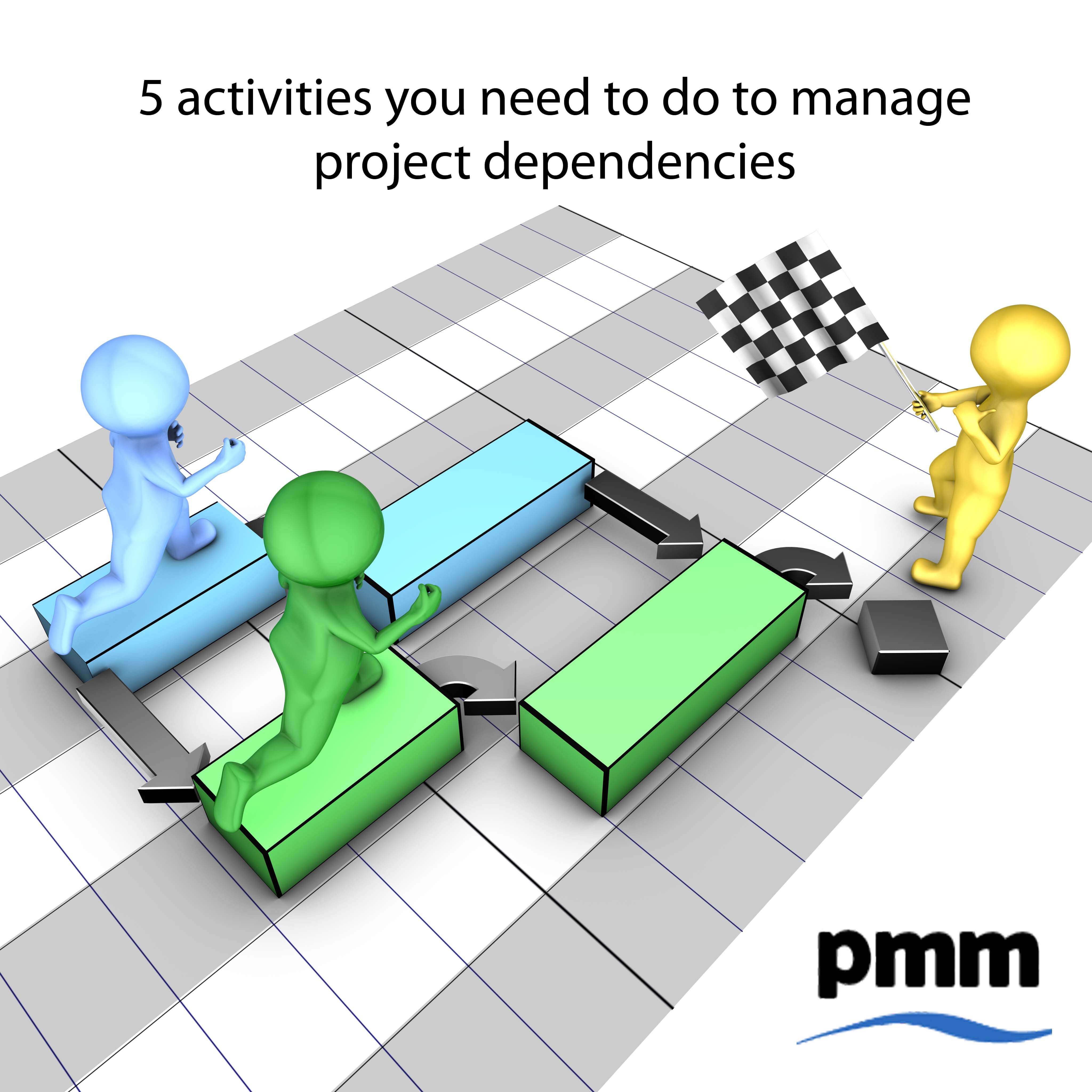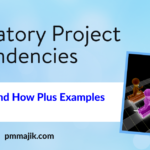In a perfect world, every project would exist a bubble where there were no constraints. All required resources (people, budget, facilities, technology, etc) would be available to suit the timelines defined by the project. Unfortunately, most of us do not have the benefit of this type of “bubble”. Therefore, the outcome of the project is very dependent on the availability of resources.
Due to this, it is important that there is a structured approach to the identification and management of dependencies. This is where a pro-active PMO can take the lead to help minimise the impact of these dependencies.
Here are 5 activities that the PMO can take a lead to help implement a structured approach to dependency management.
1. Common Understanding
Before embarking on the capture and validation of dependencies, it is important that there is a common understanding what is meant by a dependency. Even if the projects and programmes that the PMO has oversight is staffed by experienced project managers, do not assume that they fully understand what is meant by dependency management.
Make sure that there is a clear, agreed definition. This should be written down and communicated ensuring the common understanding.
It is also important to define a standard process. Dependencies often span different projects. Therefore, all participants must be clear of the process so that dependencies can be captured and communicated.
2. Plans
Before you can start to identify and manage dependencies, you must have a plan. The plan must be constructed to sufficient level with milestones that denote deliverables. These are needed as a dependency should be linked to milestones.
3. Identification
Using the defined process, each project manager needs to identify the dependencies for their project. This can be achieved by the project manager sitting down, reviewing the plan and documenting potential dependencies.
A better approach is to run a dependency identification session. This typically will involve getting a group of people into a workshop who understand the project and / or subject matter.
The aim of the session is for the collective group to identify all possible dependencies. The real power is that as the session is interactive, this will result in people generating additional dependencies building on items identified by others. It also allows for points to be discussed and decisions made if they are true dependencies or not.
For this to work, the session must include the appropriate participants. If the project involves technology, make sure they are represented. The same applies for the Business, Operations, Finance, Legal, etc.
All dependencies should be captured into the defined dependency tool and MUST include who is responsible for delivering the dependency to the project.
4. Validation
After the dependencies have been identified, it is important that these are validated. Until this has happened, there is no commitment that the dependency will be met.
The process can be simply summarised as the following:
The giver (person / project) providing the deliverable and the Receiver (project) who needs the deliverable by a set date.
The dependencies can be validated by a number of methods including:
• Discussion / meeting between both parties
• E-mail agreement
However, if there is a number of dependencies, it can be worthwhile the PMO setting up a dependencies clearing house. This is a meeting with all relevant parities. All of the dependencies are then discussed, agreed or rejected. As with the identification workshop, it allows for collective discussion that helps improve the quality of the information.
5. Continuous Management
It is important, like with most PMO activities, that the identification and validation is not seen as a single, one-off event. While the project may hold a session to identify dependencies near the start of a project. The reality is that dependencies can occur through-out the life cycle of a project. As circumstances change for the project and / or external environment, dependencies will change. Therefore, it is important that the project reviews dependencies on a continuous basis.
The PMO can play a role it making sure that this discipline is followed. By conducting periodic reviews either formally or informally of the dependency registers, this will drive the project to get into a routine of pro-actively managing dependencies.
Summary
• Dependencies are important as they have the ability to stop a project delivering.
• The PMO should take the lead in defining the process and driving the quality of the dependencies that are captured.
• All dependencies must be validated and agreed by both the Giver and Receiver, if not there is a risk the dependency will not be met.
• Management is a continuous process to be effective NOT a one of event at the start of the project.






